English Learners are growing in the Savannah-Chatham school district. What needs to be done?
Mayra Calderon remembers her struggles at Groves High School when she first immigrated from Mexico to the U.S. two decades ago.
“I was 17 at the time. I was told by the person who was helping with registration that I wasn’t going to be able to make it, that it would take me three years to graduate high school, but I was going to be too old,” said Calderon through a translator.
Calderon said she felt dejected and decided to go straight into the workforce instead, which included driving a forklift at a warehouse and working part time at a sausage shop.
“It’s like the person who was supposed to help discouraged me from going to school,” said Calderon.
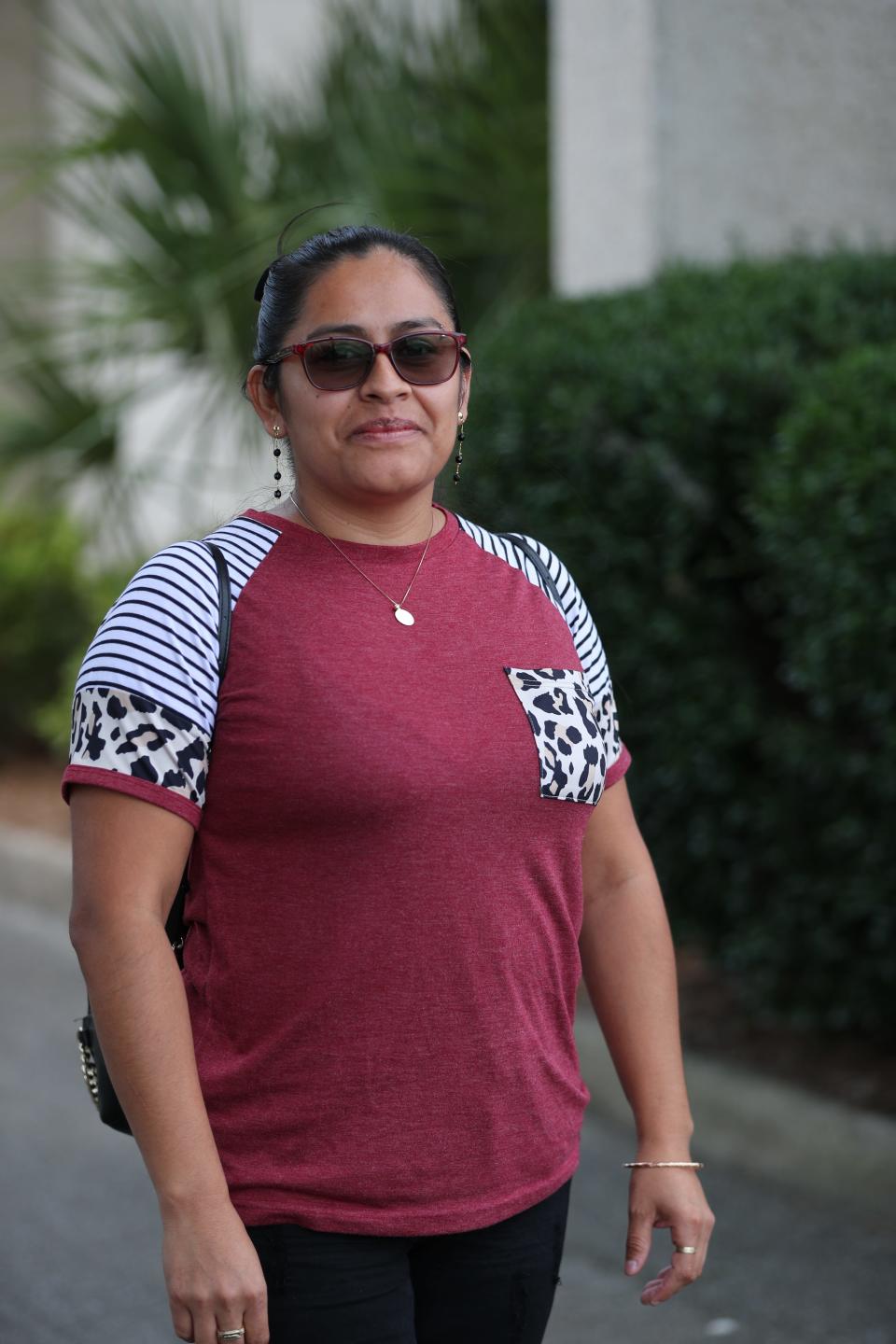
Twenty years later, Calderon is working towards her GED, while her three children attend school in the Savannah-Chatham County Public School System (SCCPSS). Two of them are in the English to Speaker of Other Languages (ESOL) program, and she worries daily about them experiencing the same treatment she did two decades ago.
Her 13-year-old son Alid is struggling to find his footing in the classroom.
“He says he doesn’t want to go to ESOL classes anymore ― the kids there are mean and make fun of him because he’s older and cannot speak English,” said Calderon.
Alid attends West Chatham, the only middle school with ESOL programming in the district. In addition to being in ESOL, Alid has a learning disability that makes it difficult for him to write. At school, Calderon said he feels isolated.
“He told me that his perception is they don’t care if he learns or not, he doesn’t feel important,” said Calderon.
For students like Alid who require language services, that pathway to academic success is often an uphill battle. Students face a language barrier, fall behind in classes and then don’t feel supported by their teachers or classmates. It’s a familiar, but vicious cycle according to members of Migrant Equity Southeast (MESE), a nonprofit that advocates for immigrant, refugee and migrant communities in South Georgia.
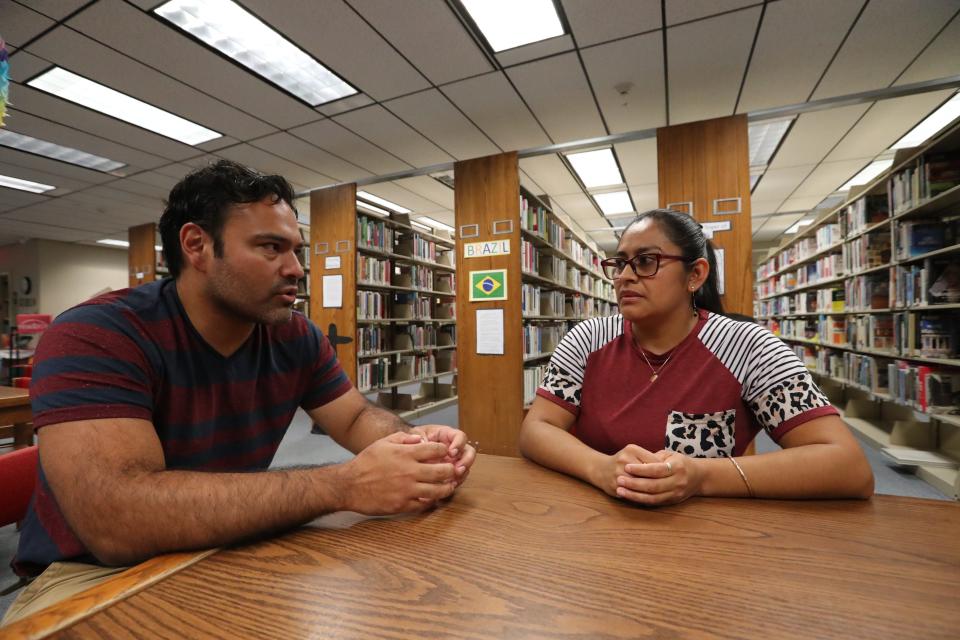
“We see kids dropping out because they think, ‘Why go to school? I’d rather just go to work,’” said Alejandro Del Razo, a community organizer with MESE. “The system is discouraging them to continue.”
While the issues that Savannah-Chatham County’s ESOL students face are not entirely unique, a clear need for more ESOL resources are being spelled out in this region.
Enrollment in the district’s ESOL program increased from 966 to 1,415 students in the last five years. A majority of those students are Hispanic, the fastest growing group in the school district that now makes up 12% of the student body. The Hispanic population in Chatham County is actually growing at a faster pace than state and national growth rates.
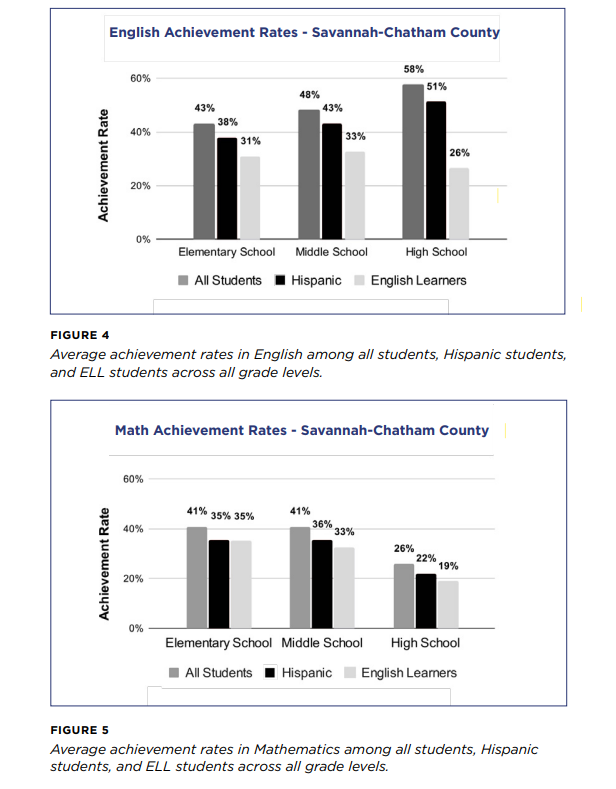
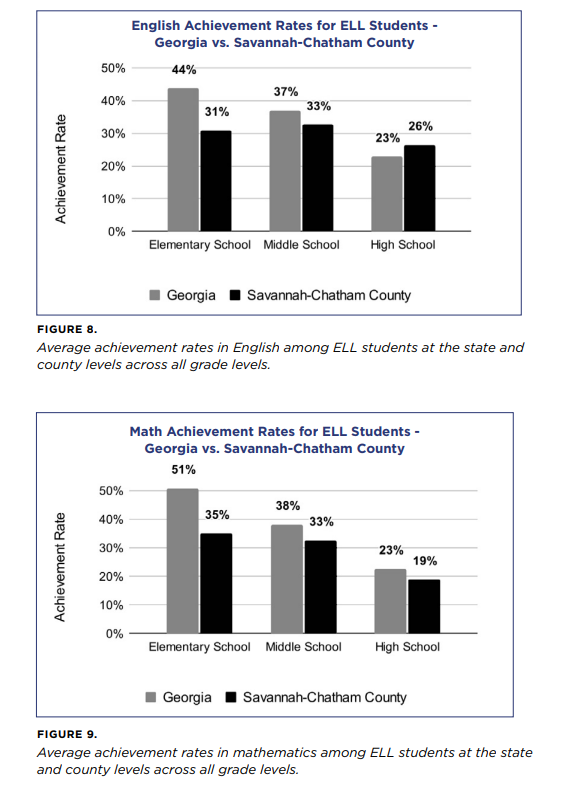
Read the report: Report highlights educational disparities for English learners in Savannah-Chatham Schools
Yet, SCCPSS’s English Language Learners (students enrolled in ESOL programs), are performing much lower academically compared to district peers. Their math and English achievement rates lag behind state averages at almost every grade level (except for ELL high schoolers, who performed higher in English achievement rates than the state average).
ELLs are also graduating in lower numbers (69%) compared to the district average (88%).
With more growth on the horizon, the school system needs to invest more into its ESOL students, advocates say. That includes hiring more ESOL teachers, bilingual staff to translate, and placing an emphasis on diversity training.
English Language Learner growth outpaces available resources
Cherie Goldman, who taught 3rd at Hesse K-8 for seven and a half years, watched as the school diversified and the number of English Learners increased in her class. Recognizing a growing need for bilingual teachers and seeing an opportunity to use her college language degrees, Goldman enrolled in coursework to earn her ESOL endorsement.
“It was professional development, so that I could learn about English as a Second Language students, both understanding them personally, culturally, and also how to address their needs instructionally in the classroom,” said Goldman.
More: Savannah-Chatham School touts graduation rate, but test scores, literacy rates fall far behind

In 2018, Goldman transitioned from teaching 3rd grade to teaching ESOL. She’s one of five full-time ESOL teachers at Hesse K-8, which has the third highest number of English Language Learners in the district. A paraprofessional, who’s not required to have an ESOL endorsement, is also part of the team. Together, they serve about 200 ESOL students by teaching multiple classes throughout the day.
The shelves in her classroom are filled with picture books, chapter books and texts ― reading materials for students at different English proficiency levels. A big blue calendar hangs on the wall next to a row of stickers labeled with the days of the week.
In the ESOL program, class sizes depend on the grade level. For K-3, a teacher can pull out 11 students at a time for ESOL instruction. They can teach a maximum of 13 students, but a paraprofessional also needs to be in the room. For grades 4-8, a teacher can have 14 students, and 15 students with an added paraprofessional.
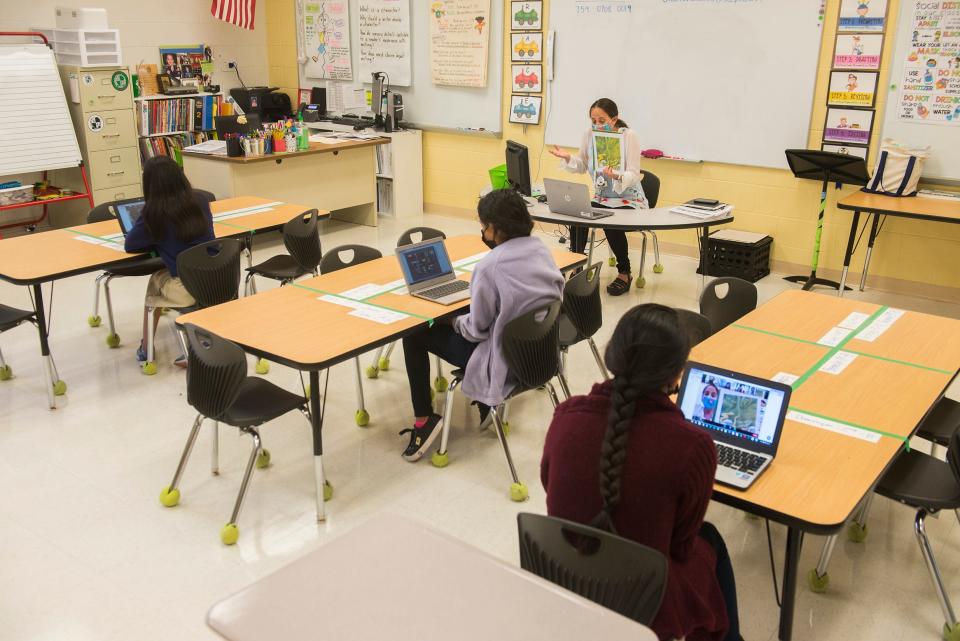
At Hesse, Goldman and other ESOL teachers pull students out for about 50 minutes per day during what is called a flex period. Flex periods are built into the school schedule for programs like ESOL, gifted education and the early intervention program. This method is known as a pull-out model.
Other schools may also use the push-in model where ESOL teachers accompany students in their regular education class to provide simultaneous ESOL instruction. Schools serve students in different ways depending on the dynamic and available resources. Educators have found pros and cons to both.
“I have no doubt it’s challenging. Being in an environment where the primary language spoken all around you is another language, it takes a lot of cognitive energy, it takes a lot of support,” said Goldman.
In the classroom, Goldman said her focus is on growth across the four areas of listening, speaking, reading and writing in English. There’s vocabulary building and working on basic interpersonal skills. For students who are more advanced, she works with them on writing essays and using more complex sentence structures.
Goldman points out that there are other ways of gauging how well ELL students are faring in the district besides the Georgia Milestones Assessment because those tests are administered in English. Georgia is one of 19 states that does not provide state-standardized assessments in any language other than English according to the Georgia Budget Policy Institute (GBPI).
“We need to be looking at what gives us information about their English proficiency instead,” said Goldman.
To measure English proficiency, the state uses the ACCESS test, which assesses listening, speaking, reading and writing ability. The ACCESS scoring scale ranges from 1-6 and if students move up a band, that means they’re improving. Those who score a composite score of five automatically test out of ESOL.
Looking at ACCESS data from the last several years, most students made some progress towards English language proficiency. Prior to the pandemic, the number of students in Savannah-Chatham County schools testing out of the ESOL program was slightly higher than the state average.
However, scores dipped in 2020 when the COVID-19 pandemic shut down in-person instruction, which is crucial for ELLs who benefit from hands-on learning and visual cues. The district’s ESOL exit rate had dropped to almost half the state exit rate. Since then, the numbers have rebounded, but still sit slightly below state average.
There’s also a certain percentage of students who have limited English proficiency that aren’t enrolled in ESOL programs and fall through the gaps of that data. A report published in May by MESE and the NYU Metro Center pointed out that while 7% of enrolled students have limited English proficiency (determined by assessments at the beginning of the year), only 4% of students are enrolled in ESOL programming.
That’s due to a number of factors. Some students don’t live within the zone of a school with ESOL programming. Just a fraction (11) of the district’s 60 schools provide ESOL programs, since resources are distributed to schools that reach a certain threshold of ESOL students. While students can request bus transportation for that reason, the district is still plagued by a bus driver shortage. And parents, like Calderon, have cited poor communication about the service.
But another hurdle that can be hard to overcome is stigma against ESOL classes, said a policy expert with GBPI.
“There’s always going to be more English Learners than those enrolled in ESOL programs for that reason (stigma),” said Stephen Owens, the education director for GBPI. “And that gets to one of the main problems in ESOL instruction which is we treat home language as a barrier to get over, versus a huge asset to be invested in.”
District officials admit that ESOL needs are outstripping available resources. The district is already struggling to fill general education teachers due to a nationwide teacher shortage. It’s even harder to fill the state-mandated number of ESOL teachers due to the extra work required for the endorsement. ESOL teachers are paid the same rate as other teachers in SCCPSS based on education and years of experience.
There are currently seven vacancies out of 45 full-time ESOL teaching positions across the district, though that number can fluctuate on a daily basis, according to school officials.
“The challenge is for more teachers to come out of teacher preparation programs with their ESOL endorsement in order to meet the need,” said Goldman. “We throw everything we’ve got into supporting our students and families. The pace has just been very fast.”
Funding and cultural sensitivity at the heart of the issue
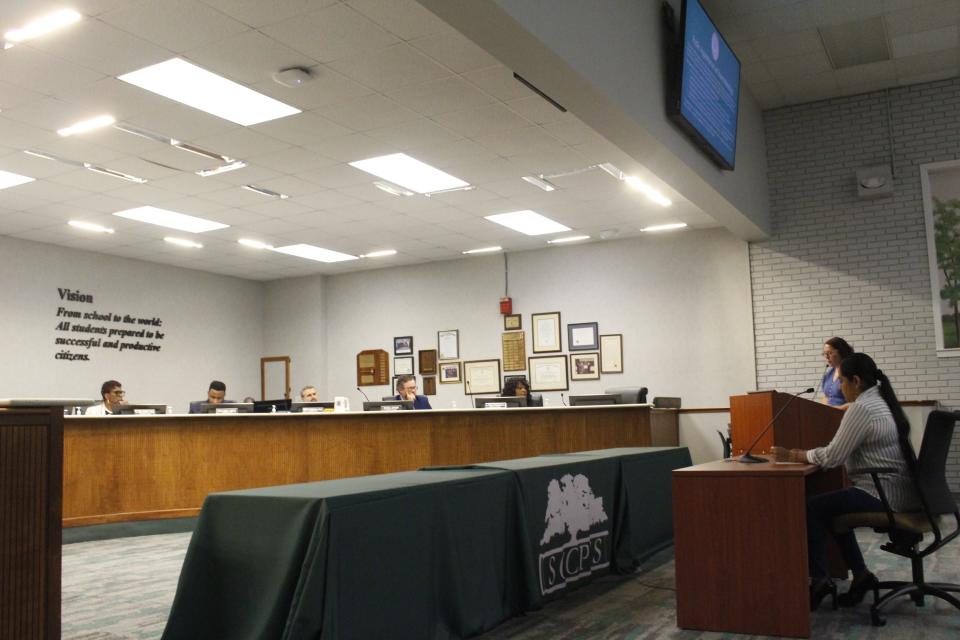
Over the last few months, as the district finalized the next fiscal year’s budget, parents and advocates flocked to the school board podium. Their clarion call was for more ESOL funding and more transparency on how those dollars are spent.
In last year’s $775 million budget, about $3.82 million was allocated towards ELL resources. About $2.8 million came from state funds and $494,591 from federal Title III funding, grants designated for English Learners and immigrant students. Both state and federal funds are dictated by formulas based on the number of ELL students in the district.
“When we asked various decision makers how each school uses their funding, we were often given the answer that the decision was at the discretion of the school principal,” said Rodriguez. “How each school uses that ESOL funding should be made public.”

More: Savannah-Chatham schools budget hearing: More money in schools, less for administrative overhead
According to SCCPSS’s 2023 adopted budget, about $2.78 million was spent on salaries and $14,417 on operating costs.
Rodriguez argued that the budget should clearly delineate how many ESOL teachers each school employs and that schools should be required to invest a certain amount in hiring bilingual staff.
The MESE/NYU report found that the small number of bilingual staff on hand were often “overworked, overstrained and exploited.” Oftentimes, bilingual teachers and custodians were pulled out of their regular jobs to translate on phone lines and front offices.
“There’s no requirement that you have to itemize. Though, the vast majority of school districts are going to make sure that money does go down to the student, we don’t have this comprehensive review of ‘is it being spent well’,” said GBPI's Owens. “Parents and communities deserve a deep dive on whether this money is being spent on the education of their child.”
Rodriguez also pointed out that funding for the Gifted Education Program, an area where ESOL students are extremely underrepresented, was nearly nine times that of ESOL programming.
“That’s why the Georgia Budget Policy Institute calls on the state to invest more heavily in the ESOL students,” said Owens. “And that looks like rethinking arbitrary spending caps, doing away with only testing students in English on our Milestones test and … recognizing the need for translation services beyond just official documents that come from the Boards of Education.”
In the most recent budget meeting, funding was allocated for an additional four full-time ESOL teachers, two interpreters and two paraprofessionals.
“We are in the business of educating all of Savannah’s children and that means all,” said school board president Roger Moss. “As you can tell from the new budget, that’s how we answered it, with more ESOL teachers and translators.”
But Rodriguez reminds people that interpretation services are only part of the solution.
“It’s more than just translating” she said. “It’s a matter of understanding other people’s culture. It’s a matter of having patience and being willing to actually take the time to help these families. It really goes a long way.”
Nancy Guan is the general assignment reporter covering Chatham County municipalities. Reach her at nguan@gannett.com or on Twitter @nancyguann.
This article originally appeared on Savannah Morning News: English Learners are outpacing language resources in the school district

